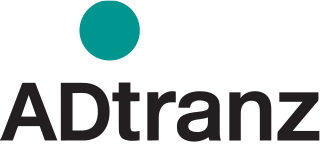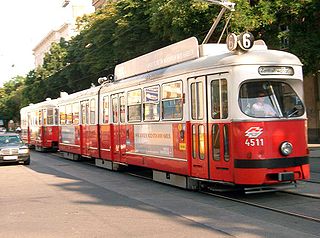
Ferdinand Porsche was an Austro-Bohemian automotive engineer and founder of the Porsche AG. He is best known for creating the first gasoline–electric hybrid vehicle (Lohner–Porsche), the Volkswagen Beetle, the Auto Union racing cars, the Mercedes-Benz SS/SSK, and several other important developments and Porsche automobiles.

Ferdinand Anton Ernst Porsche, mainly known as Ferry Porsche, was an Austrian-German technical automobile designer and automaker-entrepreneur. He operated Porsche AG in Stuttgart, Germany. His father, Ferdinand Porsche Sr. was also a renowned automobile engineer and founder of Volkswagen and Porsche. His nephew, Ferdinand Piëch, was the longtime chairman of Volkswagen Group, and his son, Ferdinand Alexander Porsche, was involved in the design of the 911.
Rotax is the brand name for a range of internal combustion engines developed and manufactured by the Austrian company BRP-Rotax GmbH & Co KG, in turn owned by the Canadian Bombardier Recreational Products. Under the Rotax brand, the company is one of the world's largest producers of light piston engines.

Allgemeine Elektricitäts-Gesellschaft AG was a German producer of electrical equipment founded in Berlin as the Deutsche Edison-Gesellschaft für angewandte Elektricität in 1883 by Emil Rathenau.

Austro-Daimler was an Austro-Hungarian automaker company, from 1899 until 1934. It was a subsidiary of the German Daimler-Motoren-Gesellschaft (DMG) until 1909.

Magna Steyr GmbH & Co KG is an automobile manufacturer based in Graz, Austria, where its primary manufacturing plant is also located. It is a subsidiary of Canadian-based Magna International and was previously part of the Steyr-Daimler-Puch conglomerate.
Steyr-Daimler-Puch was a large manufacturing conglomerate based in Steyr, Austria, which was broken up in stages between 1987 and 2001. The component parts and operations continued to exist under separate ownership and new names.

MTU Friedrichshafen GmbH is a German manufacturer of commercial internal combustion engines founded by Wilhelm Maybach and his son Karl Maybach in 1909. Wilhelm Maybach was the technical director of Daimler-Motoren-Gesellschaft (DMG), a predecessor company of the German multinational automotive corporation Daimler AG, until he left in 1907. On 23 March 1909, he founded the new company, Luftfahrzeug-Motorenbau GmbH, with his son Karl Maybach as director. A few years later the company was renamed to Maybach-Motorenbau GmbH, which originally developed and manufactured diesel and petrol engines for Zeppelins, and then railcars. The Maybach Mb.IVa was used in aircraft and airships of World War I.

Adtranz was a multi-national rail transportation equipment manufacturer with facilities concentrated in Europe and the US. The company, legally known as ABB Daimler-Benz Transportation was created in 1996 as a joint venture between ABB and Daimler-Benz to combine their rail equipment manufacturing operations. In 1999, DaimlerChrysler bought ABB's shares and changed the company's official name to DaimlerChrysler Rail Systems. The company was acquired by Bombardier Inc. in 2001, which merged it into its Bombardier Transportation division, which became the largest rail equipment manufacturer in the world at the time.
Franz Josef Popp was one of three men responsible for the founding of BMW AG and the First General Director of BMW AG from 1922 to 1942.
Bombardier Transportation was a Canadian-German rolling stock and rail transport manufacturer, headquartered in Berlin, Germany. It was one of the world's largest companies in the rail vehicle and equipment manufacturing and servicing industry. Bombardier Transportation had many regional offices, production and development facilities worldwide. It produced a wide range of products including passenger rail vehicles, locomotives, bogies, propulsion and controls. In February 2020, the company had 36,000 employees, and 63 manufacturing and engineering locations around the world. Formerly a division of Bombardier Inc., the company was acquired by French manufacturer Alstom on 29 January 2021.
Recaro Holding, as the parent company of the Recaro Group, owns the Recaro brand and the independently operating companies Recaro Aircraft Seating based in Schwäbisch Hall and Recaro eGaming based in Stuttgart, Germany. The business areas Recaro Automotive Seating and Recaro Kids are operated by licensees.

Simmering-Graz-Pauker AG (SGP), founded as Simmering-Graz-Pauker AG für Maschinen-, Kessel- und Waggonbau, was an important Austrian machine and engine factory, manufacturing: machinery, boilers and rail vehicles. It was established in 1941 through the merger of Simmering machinery and rolling stock company with the Graz machine and rolling stock company and the Paukerwerkstraße Corporation from Vienna. It was separated in 1989 into two divisions; SGP-VA Energie- und Umwelttechnik for power systems and SGP Verkehrstechnik for rail vehicles. The former became part of the Austrian Industries Technologies company and later became Austrian Energy & Environment, while the rail business was acquired by Siemens in the 1990s. It traded as Siemens SGP Verkehrstechnik before being fully merged into Siemens Austria in 2009.

The Lohner–Porsche Mixed Hybrid was the first gasoline-electric hybrid vehicle.
Kiepe Electric GmbH is a German manufacturer of electrical traction equipment for trams, trolleybuses other road and rail transport vehicles, as well as air-conditioning and heating systems, and conveyor device components. Founded in 1906, it was known as Kiepe Elektrik GmbH until 2003, when it was renamed Vossloh Kiepe, following its acquisition by Vossloh AG. Vossloh sold the company to Knorr-Bremse in January 2017, and in May 2017 Knorr renamed it Kiepe Electric GmbH.

The Egger-Lohner C.2 Phaeton, erroneously called Porsche P1, is an electric vehicle built by Egger-Lohner. It is the first vehicle that Ferdinand Porsche somewhat contributed to. The vehicle resembles a horse-drawn carriage with an electrical motor attached to it. Approximately 4 were built.
Ludwig Lohner ran his family's company as it became one of the first manufacturers of cars and airplanes in Austria-Hungary.
Otto Kauba (1908-1962) was an Austrian engineer who designed aircraft in the period during and after World War II. He also designed motor scooters in the postwar period.















